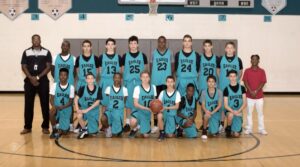
As citizens in a community, we have a responsibility to take care of each other. We all have strengths we can share with others. We also have areas of weakness where we need support. Strong communities take the responsibility to help those in need.

Identify and understand emotions, values, attitudes, motivations, mindsets, and personal attributes.
Assess and be sensitive to the feelings and needs of others.
Enthusiastic to understand more about themselves, others, and the world around them.
Make rational, ethical, and effective decisions to find the best solutions to problems.

Students will explore how the success of a community or team is dependent upon the success of each individual.






K-5
6-12

Educators: Copy the Family Connection and email it to parents, or click here to download a PDF version to email or print.
Watch
Discuss
Use these questions to start meaningful conversations about our responsibility to others.